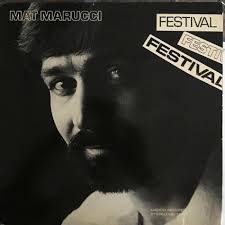
Daily Dose Of Jazz…
Mat Marucci was born Mathew Roger Marucci III on July 2, 1945 in Rome, New York into a musical family with his sister Mena, a concert pianist and his brother Ed, a trumpeter. He was classically trained on the piano and switched to drums at the age of 19.
After graduating high school from St. Aloysius Academy in 1963, Marucci studied drums with Dick Howard in Auburn, New York for two years. Receiving a business management degree at Auburn Community College in 1965, he relocated to the west coast four years later. Attending Sacramento City College in California, he received his associate degree in music, in 1973.
In addition to recording and performing, Marucci has authored several books on drumming for both Ashley Publications and Mel Bay Publications. His recordings and books have garnered four and five star reviews in JazzTimes, Jazziz, Modern Drummer, DownBeat and DRUM! magazines. He also wrote articles for several magazines and jazz websites.
In his role as a jazz educator, Mat has been a professor at several California colleges in Sacramento and Berkeley and an applied drum set instructor at the Sacramento Traditional Jazz Society.
Drummer Mat Marucci, who has lived between New York City, Los Angeles and Sacramento and has recorded seventeen albums as a leader and eight as a sideman, continues to explore and perform.
More Posts: bandleader,drums,educator,history,instrumental,jazz,music
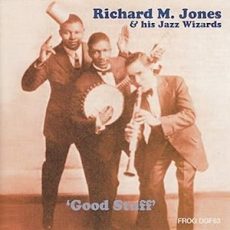
Daily Dose Of Jazz…
Richard M. Jones, born Richard Marigny Jones on June 13, 1892 in Donaldsonville, Louisiana and grew up in New Orleans, Louisiana. Suffering from a stiff leg he walked with a limp, causing fellow musicians to give him the nickname “Richard My Knee Jones” as a pun on his middle name. In his youth he played alto horn in brass bands. His main instrument, however, became the piano and by 1908 he was playing in Storyville, the red-light district of New Orleans. A few years later, he often led a small band which sometimes included Joe Oliver and also worked in the bands of John Robichaux, Armand J. Piron, and Papa Celestin.
In 1918, Jones moved to Chicago, Illinois where he worked as Chicago manager for publisher and pianist Clarence Williams. Jones began recording in 1923, making gramophone records as a piano soloist, accompanist to vocalists, and with his bands The Jazz Wizards and The Chicago Cosmopolitans. He recorded for Gennett, OKeh, Victor, and Paramount record labels in the 1920s.
He also worked for OKeh Records as supervisor of the company’s “Race” Records for most of the decade, separately the Caucasian artists from the Black. During this period he was the producer of Louis Armstrong’s influential Hot Five and Hot Seven recordings. In the 1930s, Jones performed a similar management role for Decca.
Pianist, composer, band leader, and record producer Richard M. Jones, sometimes written Richard Mariney Jones and who had numerous songs bearing his name as author, including Trouble in Mind and worked for Mercury Records until his death on December 8, 1945 in Chicago, at the age of 53.
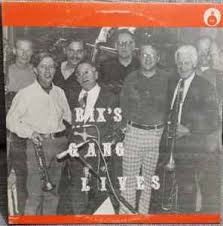
Daily Dose Of Jazz…
William C. Rank was born in Lafayette, Indiana, on June 8, 1904 and initially worked in Indiana and Florida. In 1922, He played trombone in Tade’s Singing Orchestra, which was led by violinist Tade Dolen. Between 1923 and 1927 he played with Jean Goldkette’s band in Detroit, Michigan and often recorded with Bix Beiderbecke.
After playing with Adrian Rollini in 1927 he had a period working freelance, then he joined Paul Whiteman’s band, and stayed until 1938. Rank became a studio musician in Hollywood into the early 1940s, when he moved to Cincinnati, Ohio It was while living here that he led a tenet for the rest of the 1940s.
After changing his musical lifestyle to performing part-time, he worked in the insurance industry. His one album as a leader, a tribute to Beiderbecke, was recorded in 1973.
Trombonist Bill Rank continued playing until a short time before his death, on May 20, 1979, in Cincinnati.
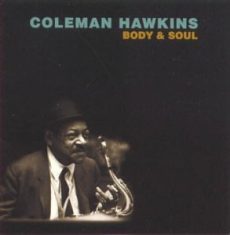
Daily Dose Of Jazz…
Arthur Herbert was born May 28, 1907 in Brooklyn, New York to Trinidadian parents. As a young man he worked in a silver and gold refinery while playing local gigs in New York nightclubs and hotels in his spare time. In 1935 he joined Eddie Williams’s band, and soon after started his own, the Rhythm Masters.
In the 1930s and 1940s he worked as a sideman with musicians such as Pete Brown, Coleman Hawkins, Hot Lips Page and Sidney Bechet. The 1950s saw Herbert in semi-retirement as a musician and started up his own pest extermination business. He played in various swing jazz revival ensembles, and toured with Lem Johnson in Poland in the 1960s.
Herbert taught his nephew, drummer Herb Lovelle, to read sheet music, something black musicians were then not held to know. He got his nephew his first gig with Hot Lips Page. He also taught drummer Shelly Manne, according to Herb Lovelle.
Drummer Arthur Herbert date of death is unknown but would have celebrate his 117th birthday today.More Posts: drums,history,instrumental,jazz,music
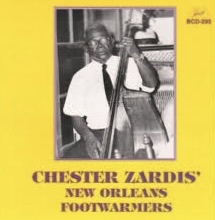
Daily Dose Of Jazz…
Chester Zardis was born on May 27, 1900, in New Orleans, Louisiana and played bass from a young age, studying without his disapproving mother’s knowledge under Billy Marrero of the Superior Orchestra. In his teens he was sent to the Jones Waif Home where he began playing with another of the Home’s residents, Louis Armstrong.
He joined Buddy Petit’s orchestra at age 16, and worked as a bassist in nightclubs and a tubist in brass bands in 1920s New Orleans. There he played with Kid Rena, A.J. Piron, Punch Miller, Kid Howard, Jack Carey, Fate Marable, and Duke Dejan’s Dixie Rhythm Band.
He was given the nickname “Little Bear” by riverboat bandleader Fats Pichon, a bandleader with whom Zardis played in the 1930s. During that decade he also played with Count Basie in New York City, and recorded with George Lewis and Bunk Johnson. During World War II he served in the Army, then worked briefly as a sheriff. Upon his return to New Orleans, he played with Andy Anderson, but quit music between 1954 and 1964.
When he returned to active performance, Chester played often at Preservation Hall with Lewis and Percy Humphrey among many others. He continued to be a fixture of the New Orleans jazz scene up until his death in 1990, including several international tours.
Double bassist Chester Zardis, who was regularly featured in documentaries including Liberty Street Blues, Chester Zardis: Spirit of New Orleans, and Three Men of Jazz, died on August 14, 1990 in New Orleans.
More Posts: bass,history,instrumental,music




